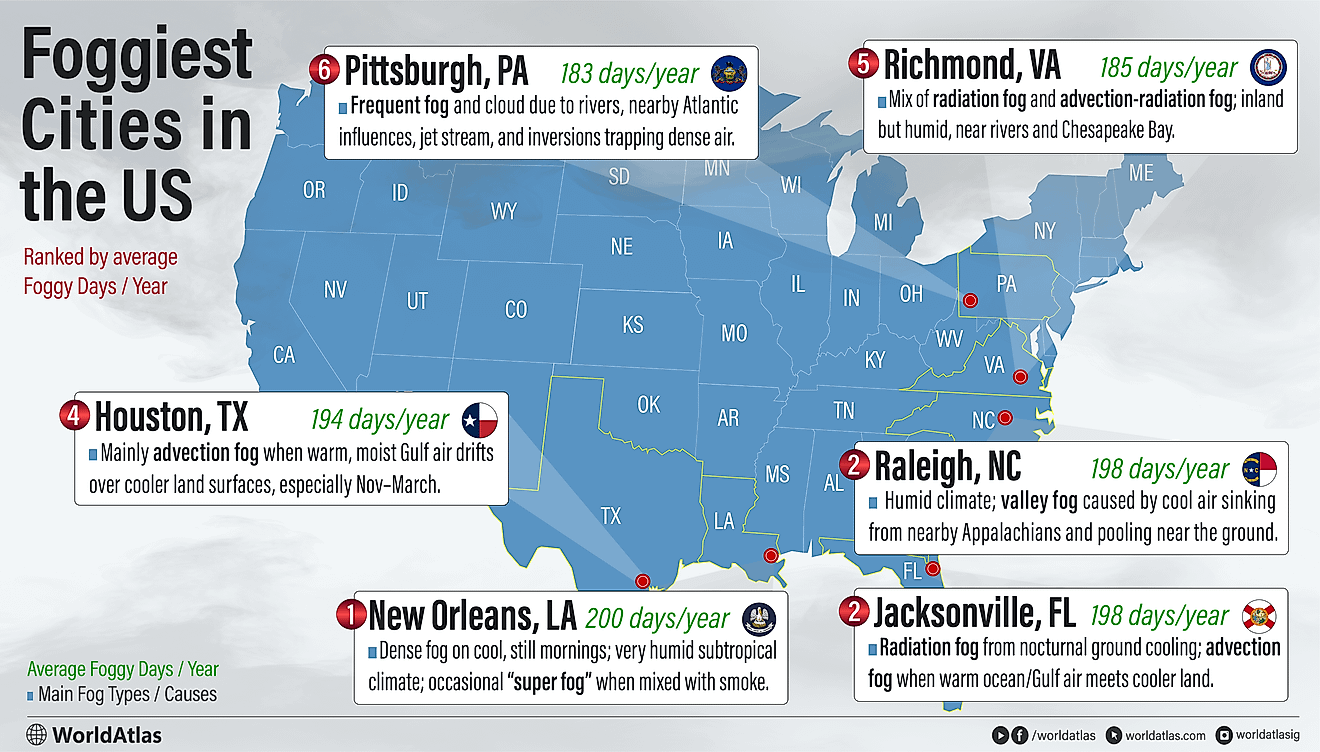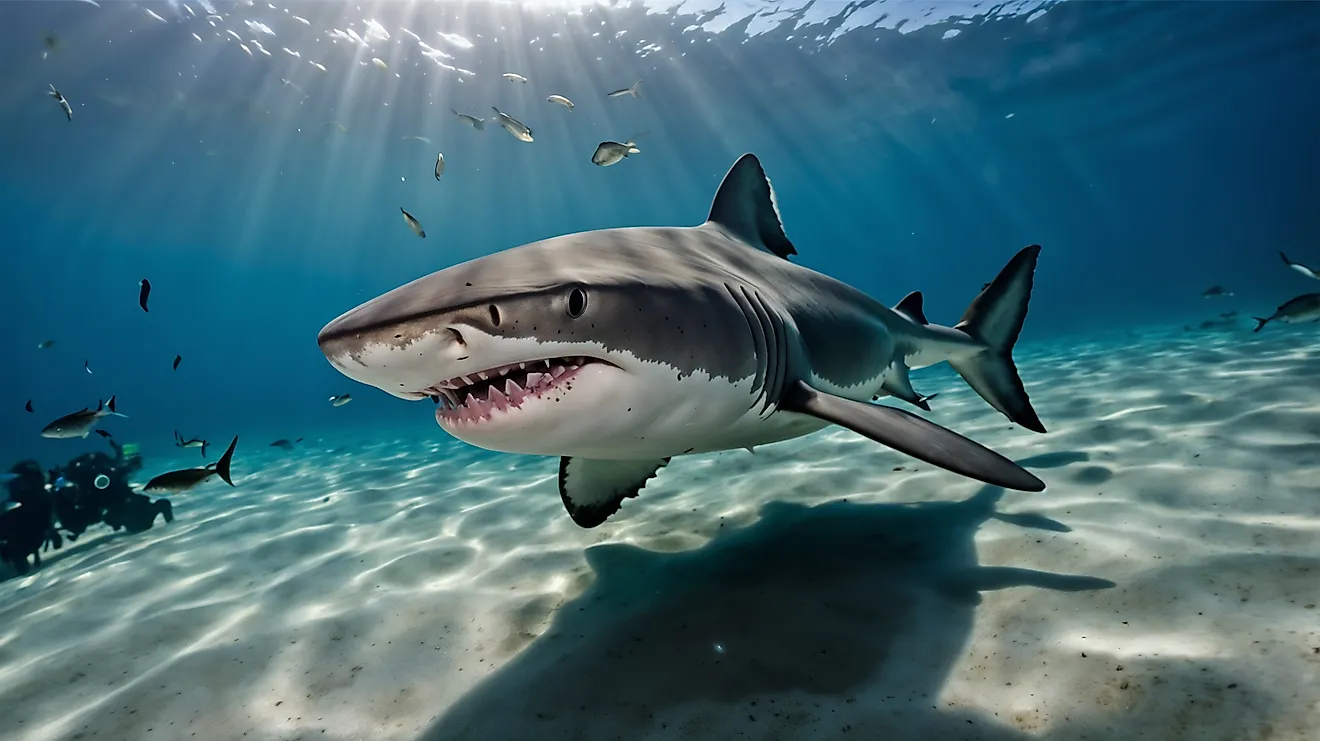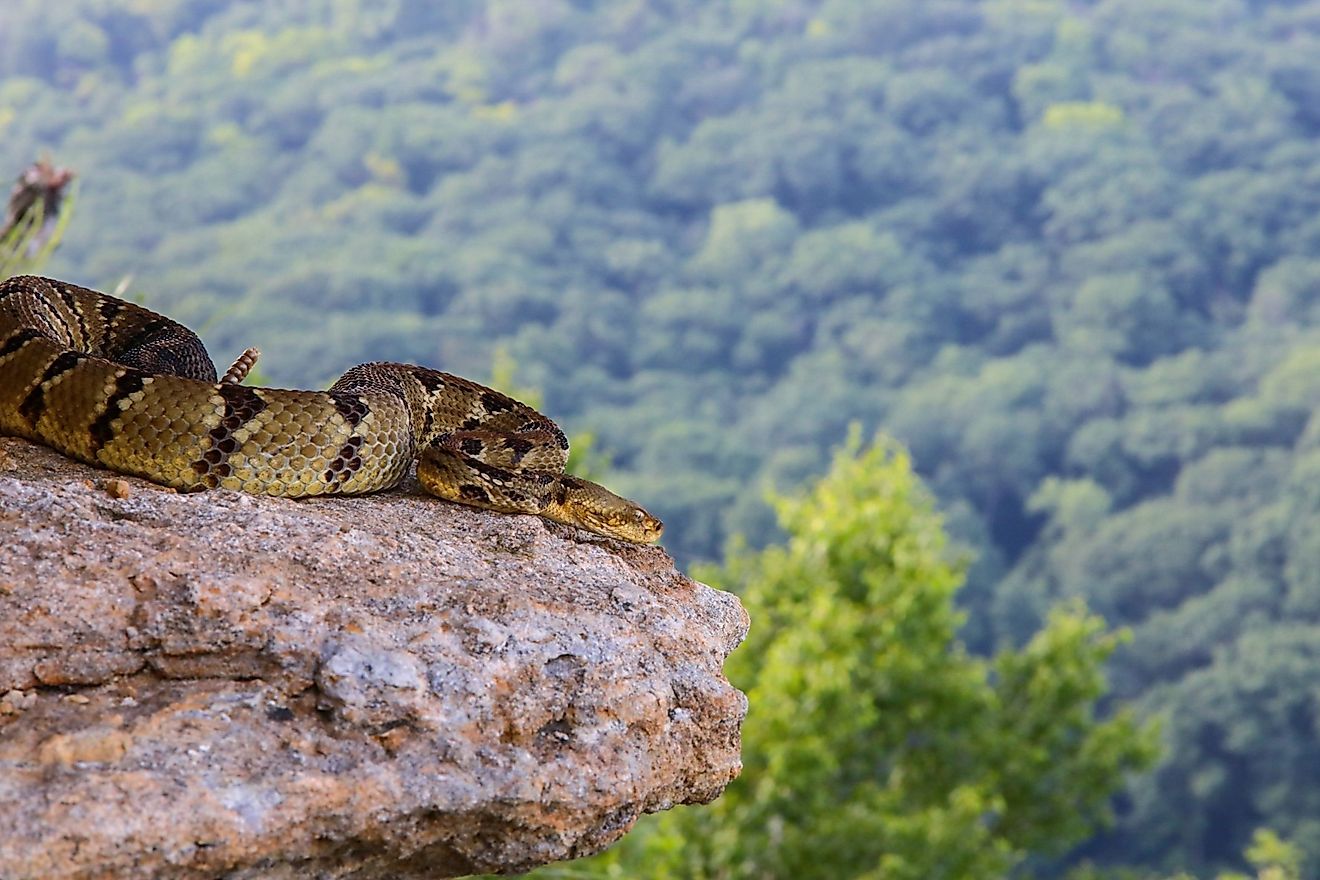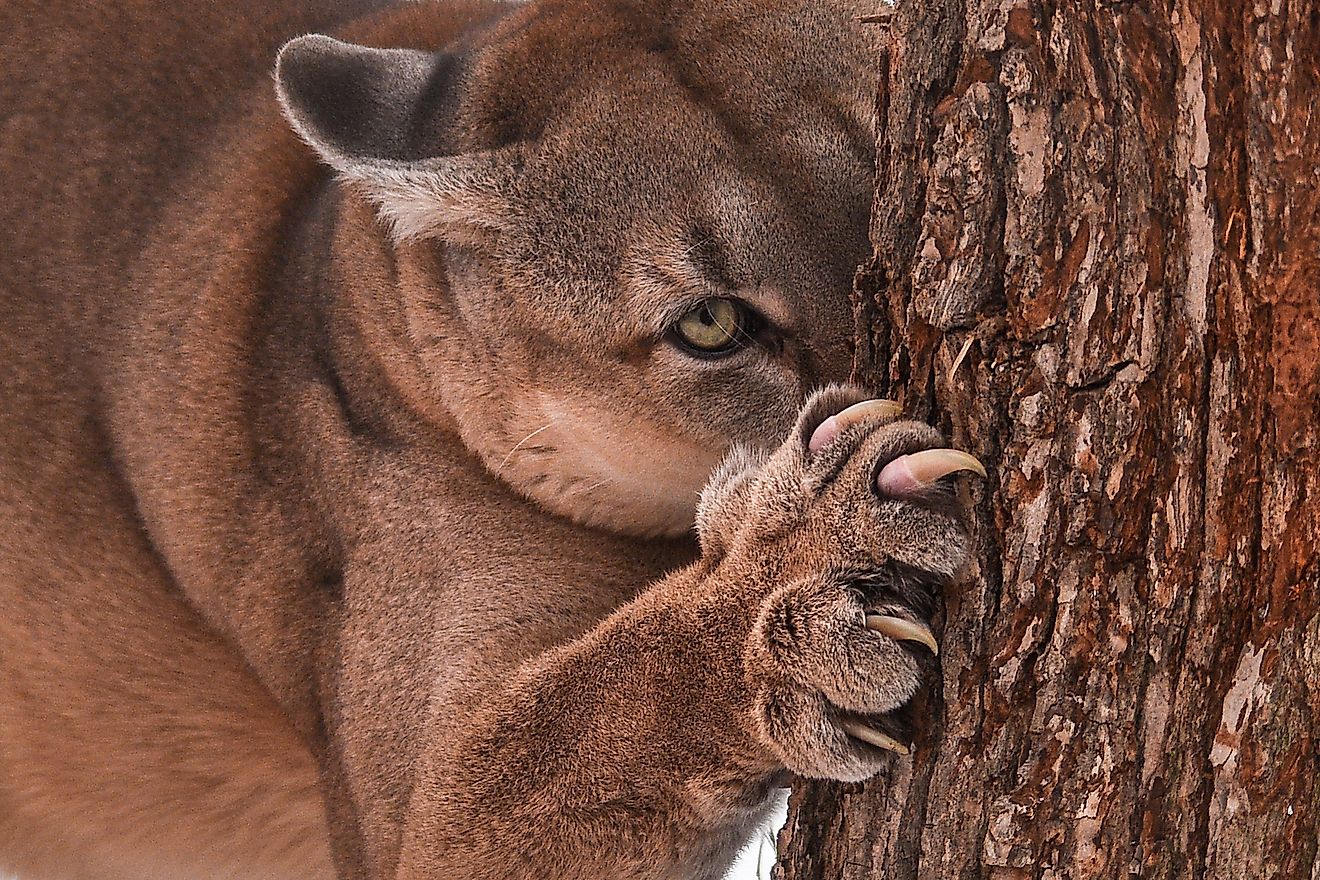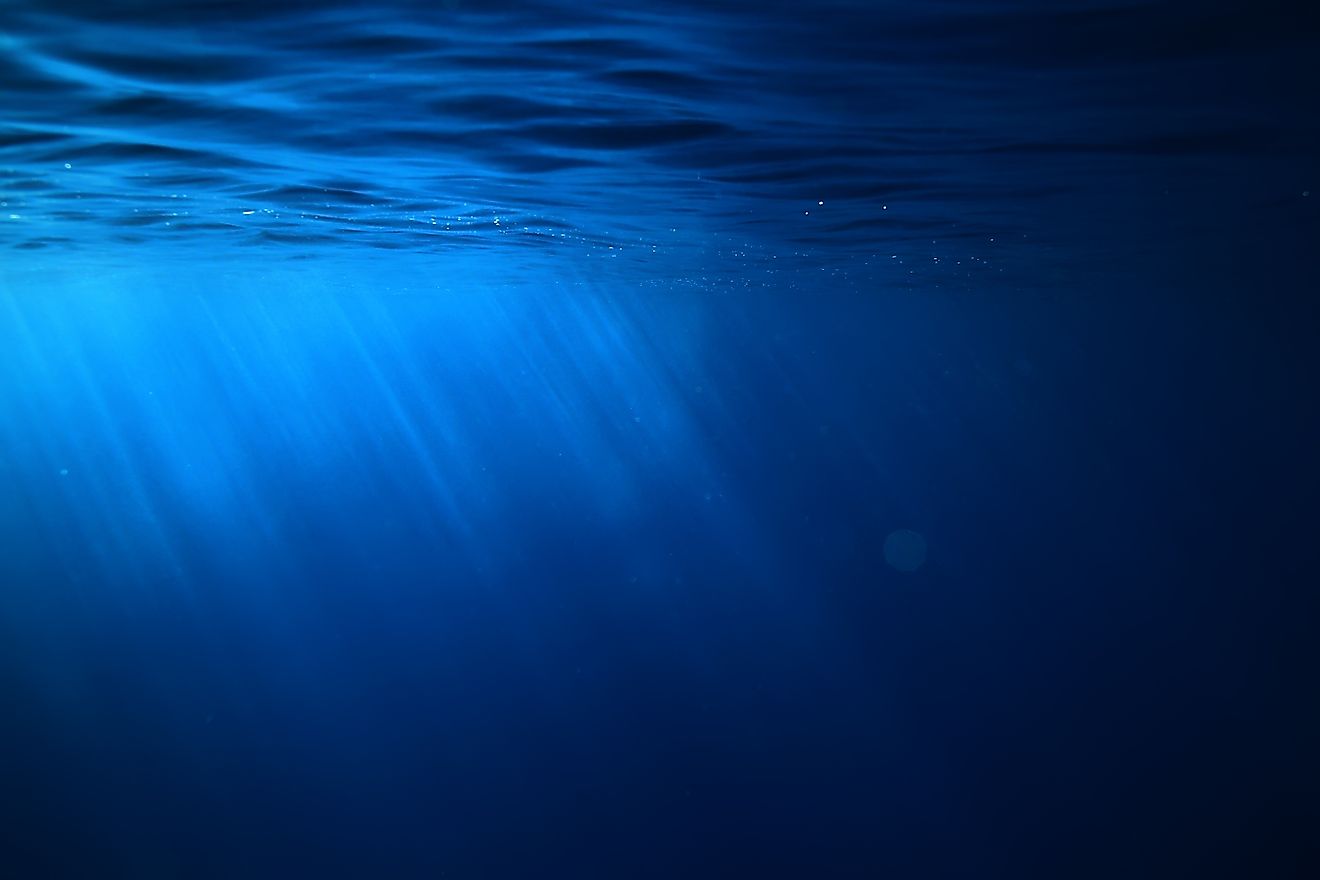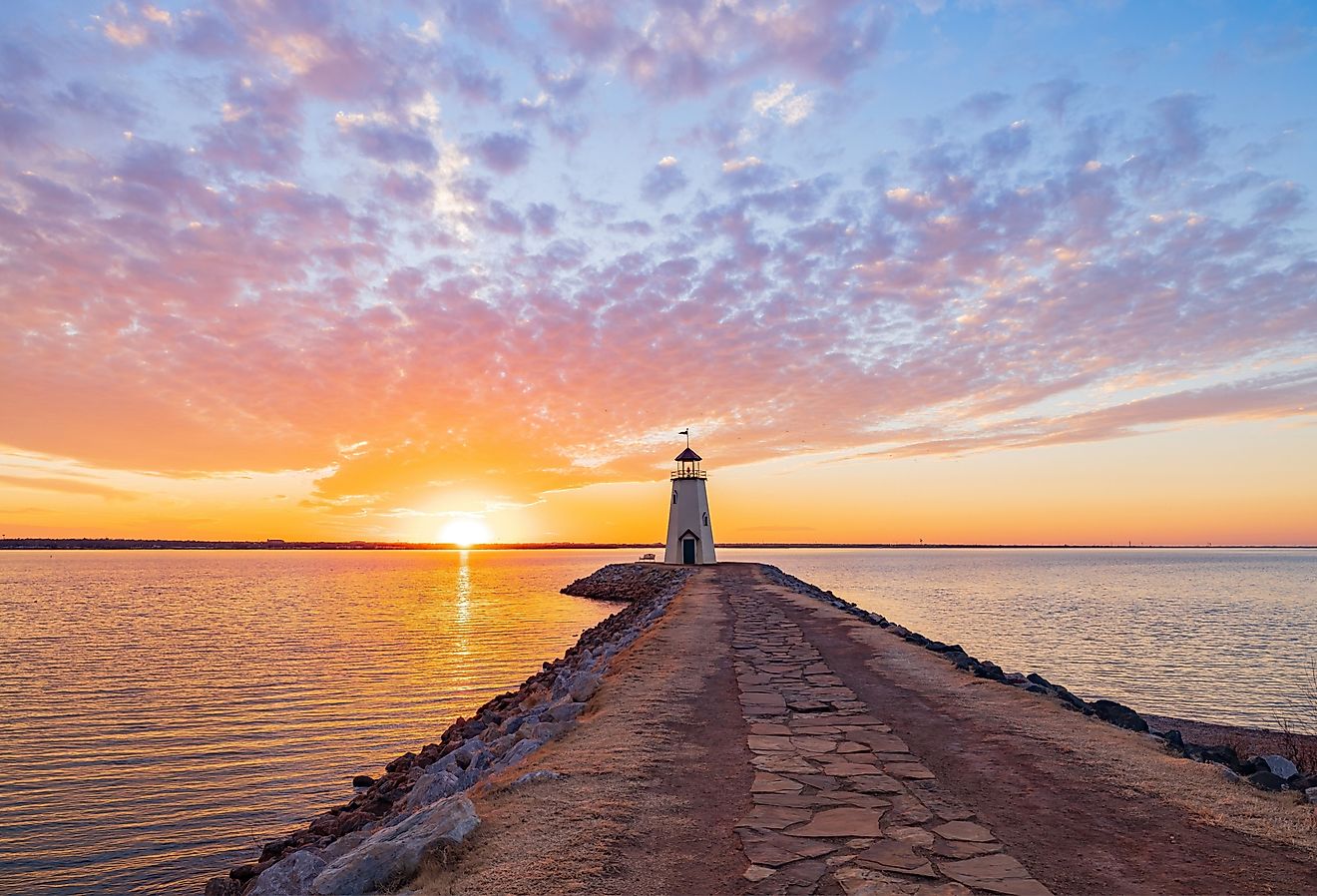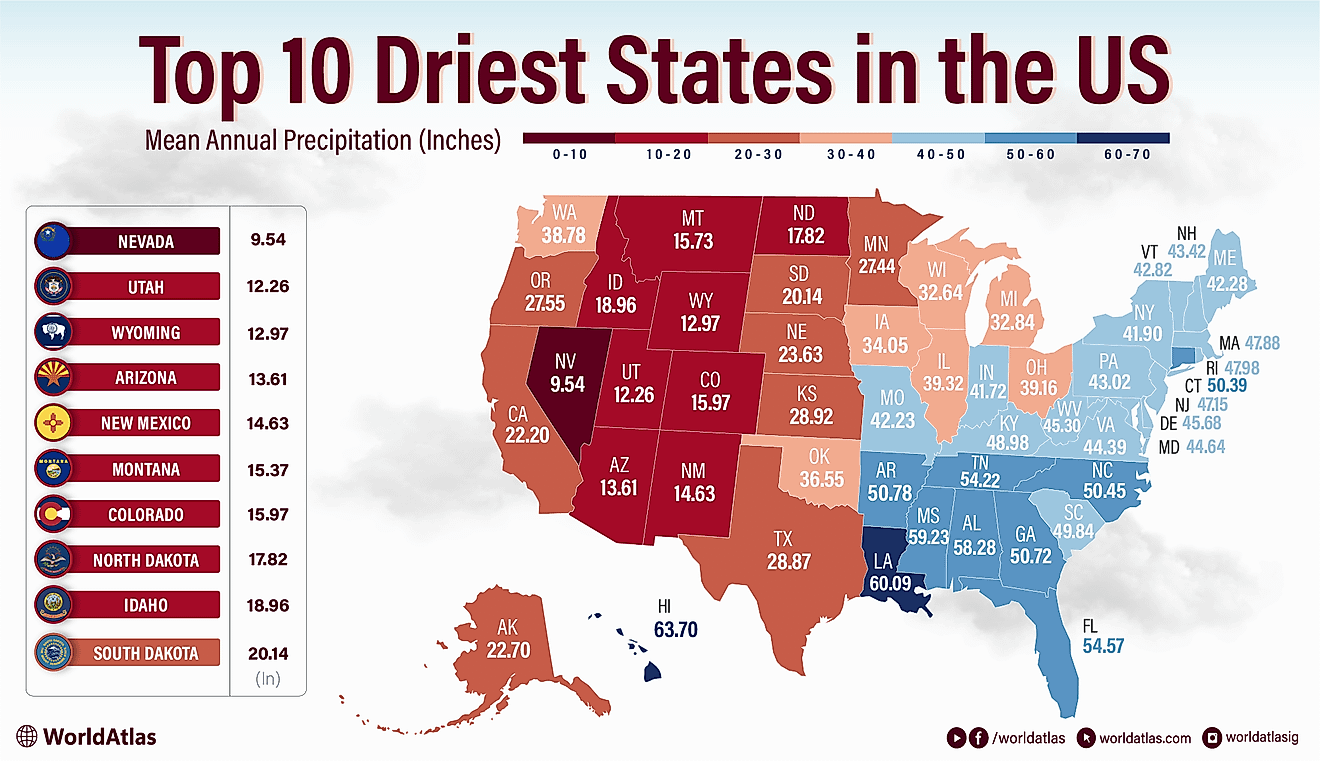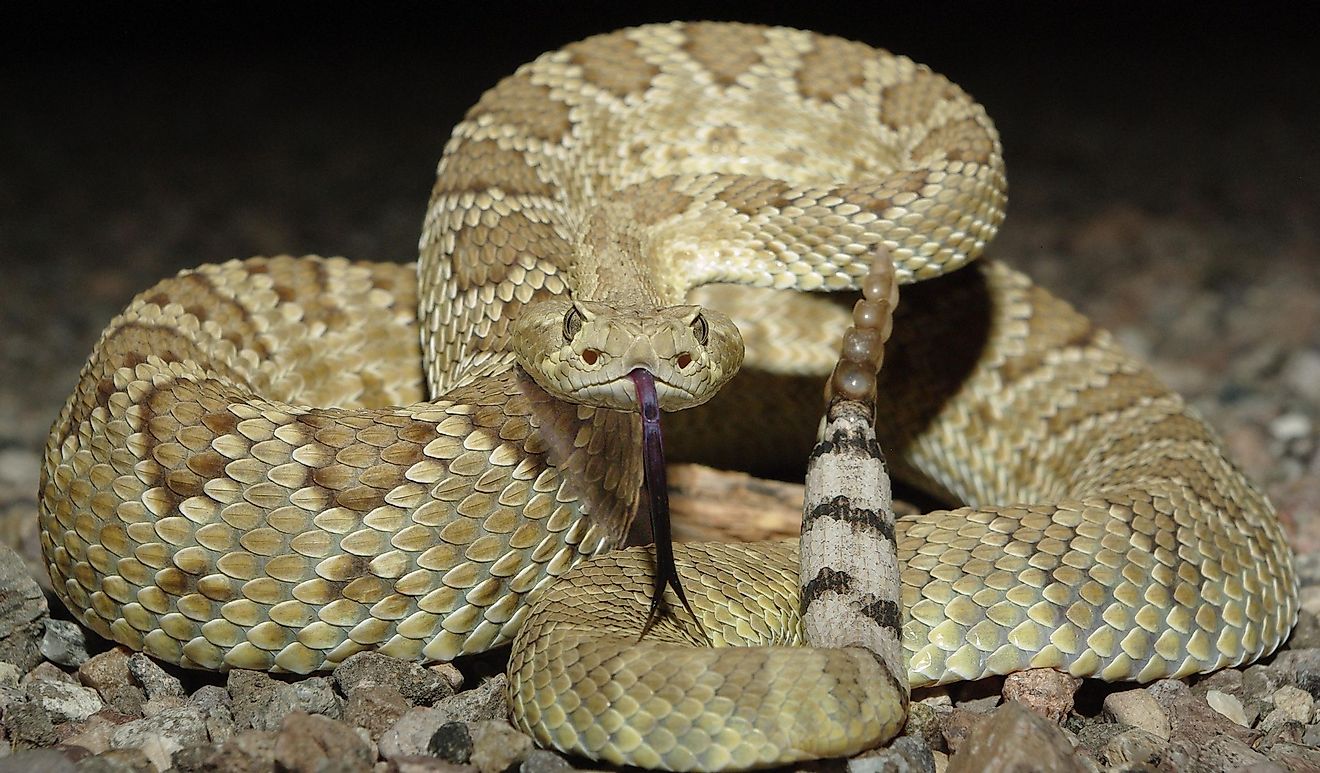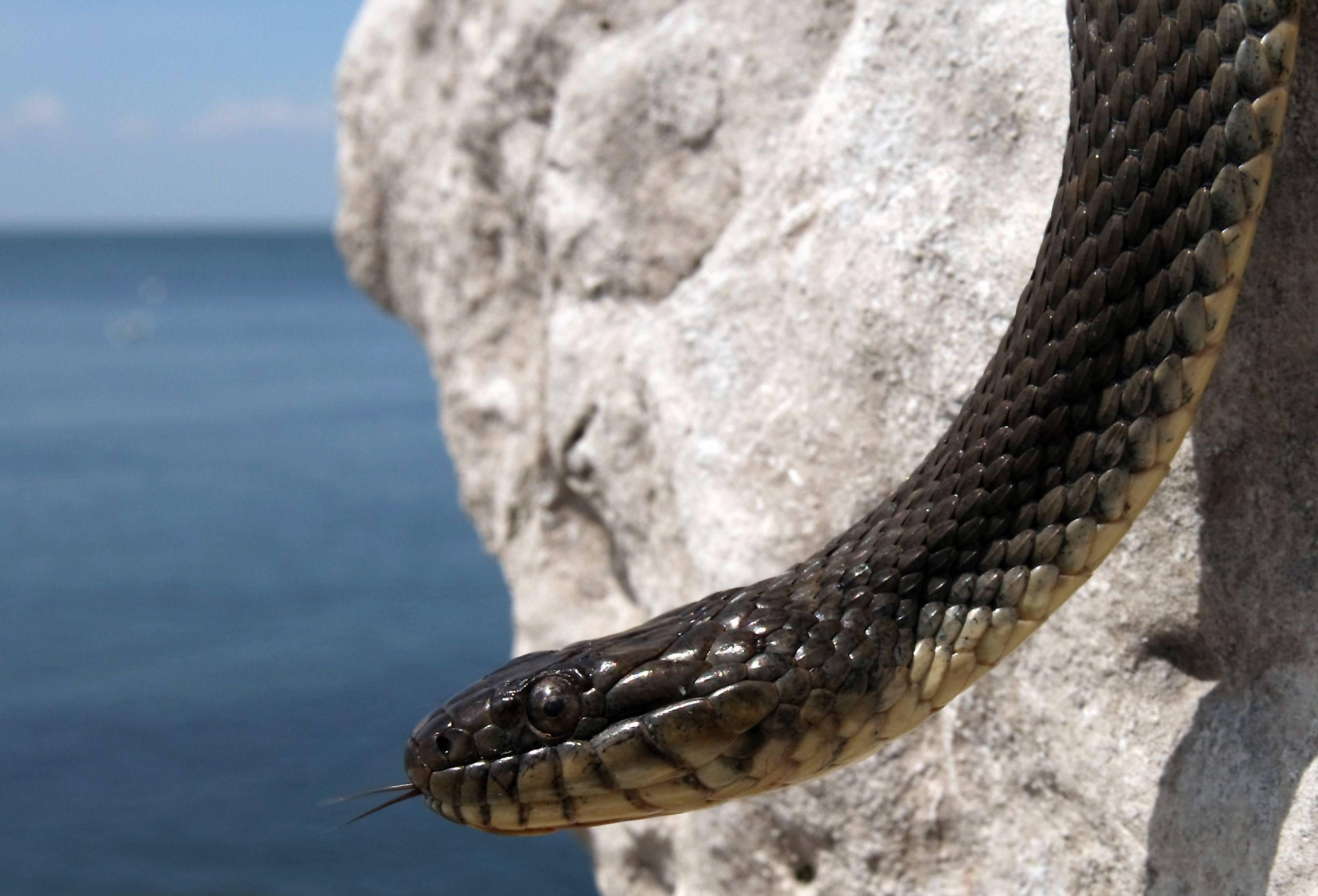
Most Snake Infested Lakes In Canada
Canada houses a plethora of lakes that support immense amounts of flora and fauna. Home to food, water, shelter, and other necessities, many animals live in and around lakes. While most of these animals are relatively harmless, there are some that can be dangerous. For example, snakes often infest large lakes thanks to the abundance of hunting prey, easy traversal, and other reasons. Due to this, there are many snake-infested lakes in Canada.
Lake Erie
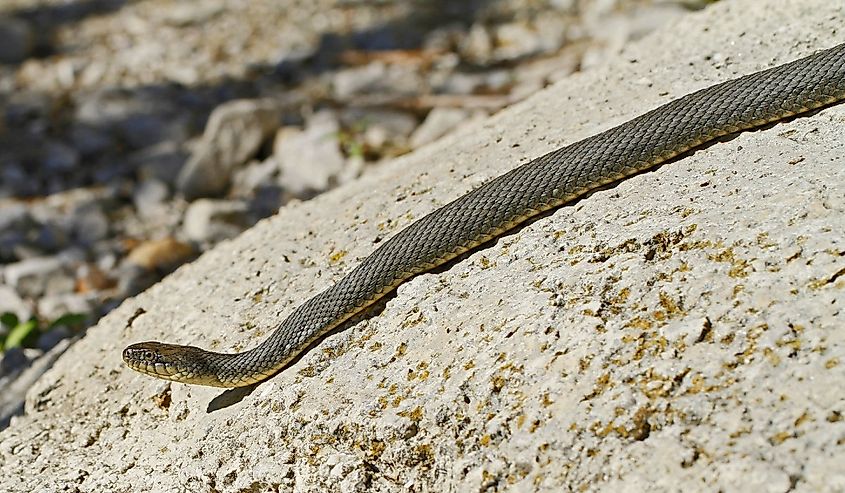
One of the most snake-infested lakes in the country, Lake Erie is a stunning part of the Great Lakes. With a surface area of 9,910 square miles, it is the fourth largest in the group. Nestled along the Canada-United States border, Lake Erie is an important lake when it comes to human settlements, industry, and ecology. The lake houses a complex ecosystem that includes more than 180 invasive species and many snakes. However, what truly makes Lake Erie special is that it has a snake named after it; the Lake Erie Water Snake!
This stunning snake resides across 15 offshore islands along western Lake Erie. In total, this area is home to more than 12,000 individual snakes, which is one of the highest populations in Canada. It is a subspecies of the common watersnake and has a nonvenomous bite. Still, keep an eye out as it has a dark gray appearance which can be hard to spot in the water.
While the Lake Erie Water Snake is the prime species found here, the massive lake is also an oasis for many other snakes. Some of the other species found in Lake Erie are the Northern Water Snake, Eastern Fox Snake, Eastern Garter Snake, and Kirtland’s Snake. These snakes are also nonvenomous and boast more distinct patterns, making them easier to identify.
Sylvan Lake
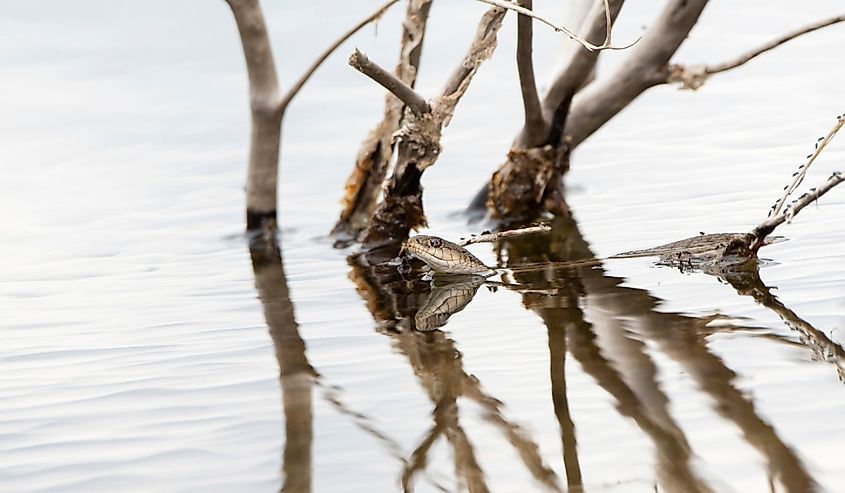
Located in central Alberta, Sylvan Lake is a popular tourist destination and snake-infested lake. The lake was first settled by French immigrants in the late 1800s with the name “Snake Lake.” This was due to the large population of garter snakes which populated the area at the time. While the name changed soon after, Sylvan Lake is still an amazing lake filled with both tourists and wildlife. Despite the snake population, people enjoy sunbathing, swimming, water-skiing, and running along the on-water jungle gym attraction in the summer, the Aqua Splash.
When it comes to the lake’s wildlife and snake population, there is still a prominent population of snakes in Sylvan Lake. As of today, you can find a noticeable number of Western Terrestrial Garter Snakes here. These snakes are small to medium in size and boast a running yellow, light orange, and white dorsal stripe for a stunning look. Most of the sub-species found in Sylvan Lake are non-venomous to mildly venomous, so you don’t need to be too wary of this spectacular lake.
Lake Ontario
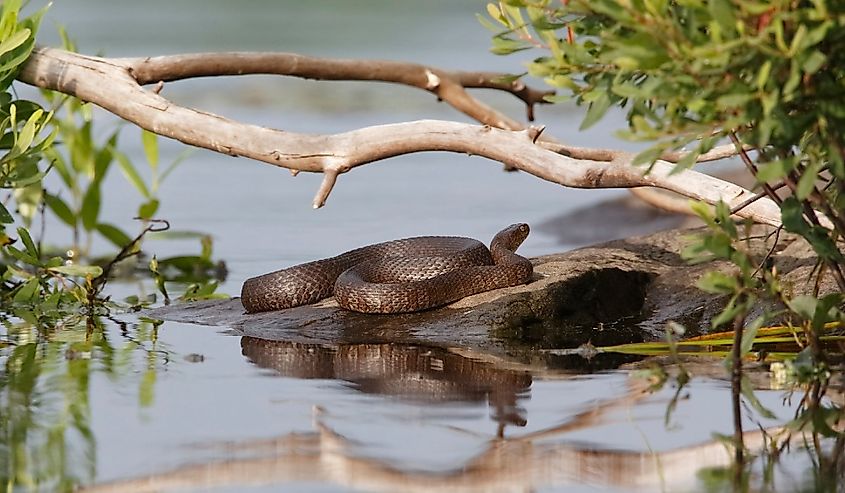
One of the five Great Lakes of North America, Lake Ontario is a large lake along the Canada-United States border. The lake boasts an immense area of 7,340 square miles which makes it the 13th largest in the world. In addition, Lake Ontario houses a large amount of water with a volume exceeding 390 cubic miles, which provides ample room for marine life. The lake is also surrounded by deciduous forests, which provide an ideal environment for many animal species to thrive.
Thanks to these favorable conditions, Lake Ontario is one of the most snake-infested lakes in Canada. You can find large populations of Northern Water Snakes in the Thousand Islands National Park along eastern Lake Ontario. Here, you will find many small islands that provide an isolated area away from natural predators. So, snakes that are strong swimmers, such as the Northern Water Snake, Eastern Garter Snake, and Lake Erie Water Snake, thrive in the semi-aquatic conditions. Thankfully, all these species are non-venomous, and tourists enjoy recreational activities on the lake without worrying about dangerous encounters with snakes.
Lake Huron
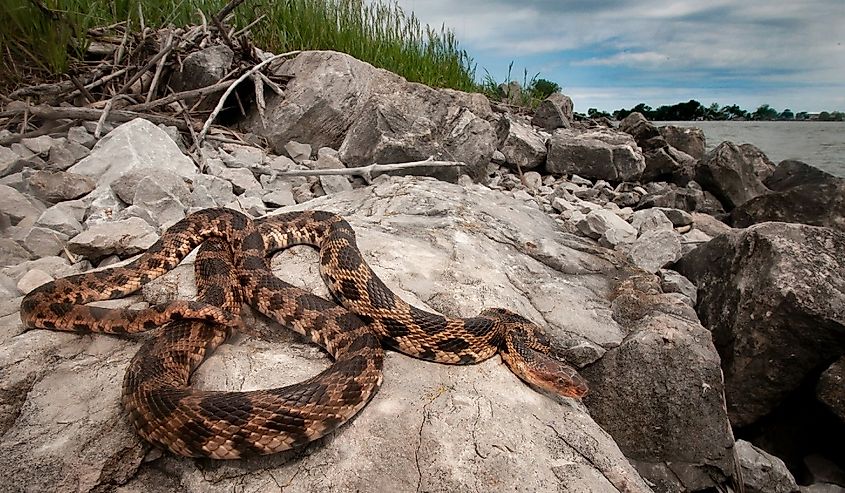
The second largest in the Great Lakes, Lake Huron boasts a surface area of more than 23,000 square miles. It is one of the largest lakes in the world and spans both Canada and the United States. To this end, Lake Huron supports a plethora of towns and cities, such as Bay City, Alpena, Port, and Huron. Similarly, it also supports rich ecology with all sorts of marine animals found here. For example, the lake is home to exotic species such as zebra mussels, round gobies, and spiny water fleas.
Parallel to the rich ecology when it comes to marine life, Lake Huron is also home to a healthy population of snakes. With one of the largest shorelines in the region, many aquatic and semi-aquatic species of snakes are able to thrive in the coastal areas. Some of the most common species found in Lake Huron are the common watersnake, Eastern Fox Snake, and Common Ribbonsnake. All three of these species are nonvenomous and live nearby marshes, streams, ponds, and other semi-aquatic areas. However, out of the three, the Eastern fox snake is endemic to this region and only resides in the Great Lakes area.
Slocan Lake
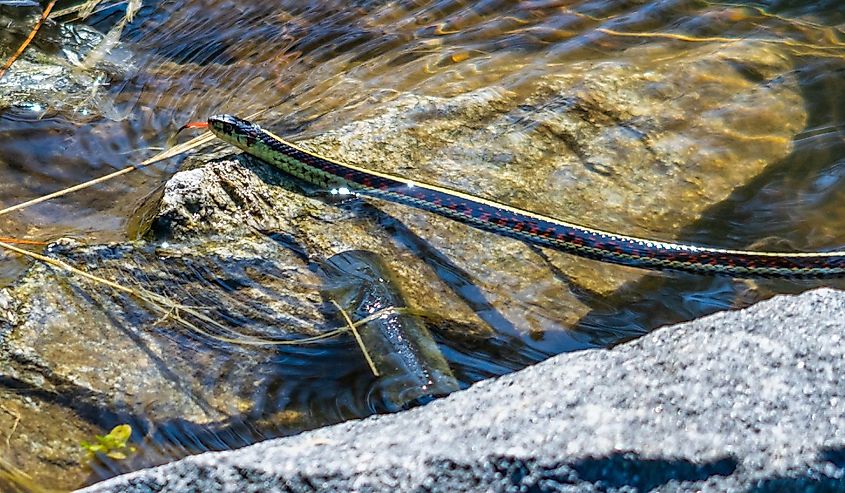
Located in the West Kootenay region of British Columbia, Slocan Lake is one of the smaller bodies of water in Canada. Nestled within the Slocan Valley, the Lake has an area of 26.75 square miles. To this end, surrounding Slocan Lake is luscious greenery, snow-capped mountains, and rich wildlife. The lake is a vital source of water for the surrounding areas as well as an important habitat for local marine life.
When it comes to the lake’s snake population, you can find a bustling presence of the Common Garter Snake. Thanks to the placid waters and abundance of foliage and rocks along the shore, these semi-aquatic snakes have ample space to call home. These spots provide an ideal location for sunbathing and hiding, both of which promote the breeding and growth of the Common Garter Snake. The snakes themselves are quite vibrant, boasting unique longitudinal stripes in colors such as yellow, gold, red, and many others. Also, while they are venomous, you can rest assured as a bite is not dangerous for humans.
Cultus Lake
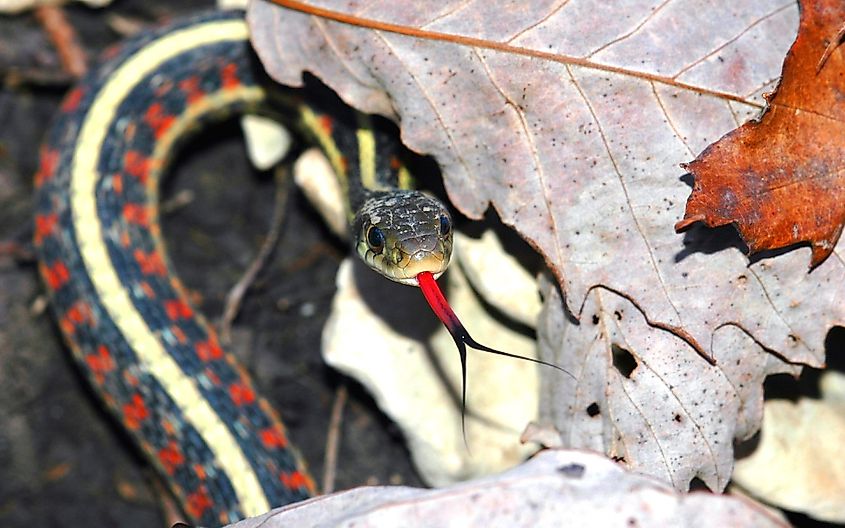
Cultus Lake is home to unique snake species rarely found in other Canadian lakes. Located in Fraser Valley, British Columbia, the lake has a relatively small area of 2.4 square miles. It is bolstered by many smaller creeks and has a shore length exceeding 8 square miles. These shores house dense vegetation and rocks, which provide ideal spaces for snakes to hide and sunbathe. Along with this, the lake’s water is quite warm and clear, which promotes local wildlife.
Thanks to the lake’s favorable conditions, it boasts a large population of various snake species. Most of these live along the coast, hiding throughout the rich foliage and rocks. One of the most common is the Red-sided Garter Snake, a beautiful subspecies of the garter snake. This snake has a vibrant red streak along with longitudinal stripes for a beautiful appearance. While they are venomous, the bite of a Red-sided Garter Snake isn’t toxic enough to harm humans.
Cultus Lake also houses the Rubber Boa and the Western Terrestrial Garter Snake. The Rubber Boa is a nonvenomous snake with a rubbery appearance which makes it hard to see along muddy areas. On the other hand, the Western Terrestrial Garter Snake is one of the few venomous snakes found in Canadian lakes. It has mild venom, which can cause local edema. So, be wary of this snake’s vibrant red, yellow, and gold coloration if you are near Cultus Lake.
Most Common Snake Species Found In Canadian Lakes
Lake Erie Watersnake
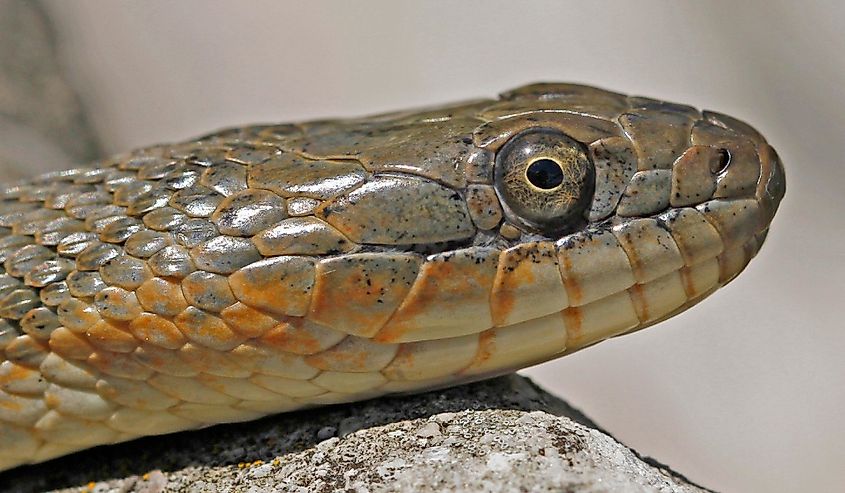
Named after one of the great lakes, the Lake Erie watersnake is one of the most popular in the region. This snake ranges from 23 to 35 in length and has a uniform gray coloration. It is primarily found in 15 islands along western Lake Erie, thanks to their isolation from predators and humans. In terms of population, this species has boomed, with numbers going from 1,500 to 12,000 in only 10 years!
Common Watersnake
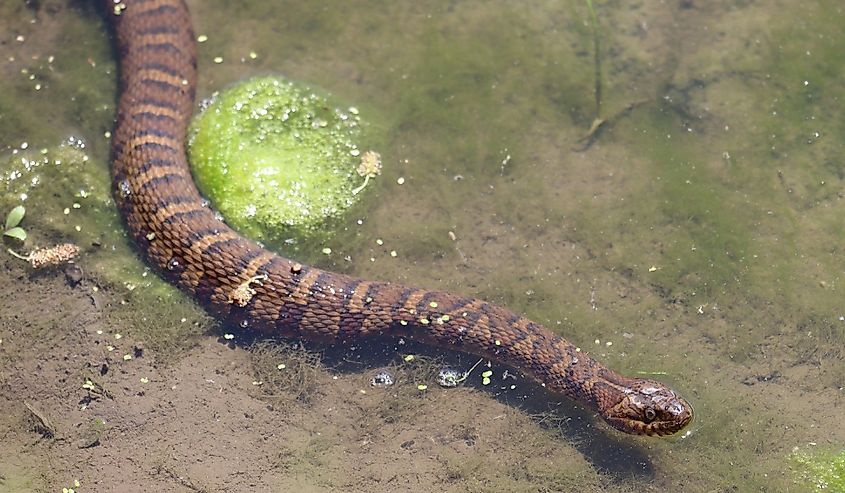
The common watersnake belongs to the same genus as the Lake Erie watersnake but has quite a different appearance. It boasts a brown to yellowish color with dark crossbands across its body. This provides a vibrant appearance that is much more prominent than other species. Along with this, the common watersnake is also much larger, reaching lengths of up to 53 inches which is longer than most children! Thankfully, this species is nonvenomous and harmless to humans.
Eastern Garter Snake
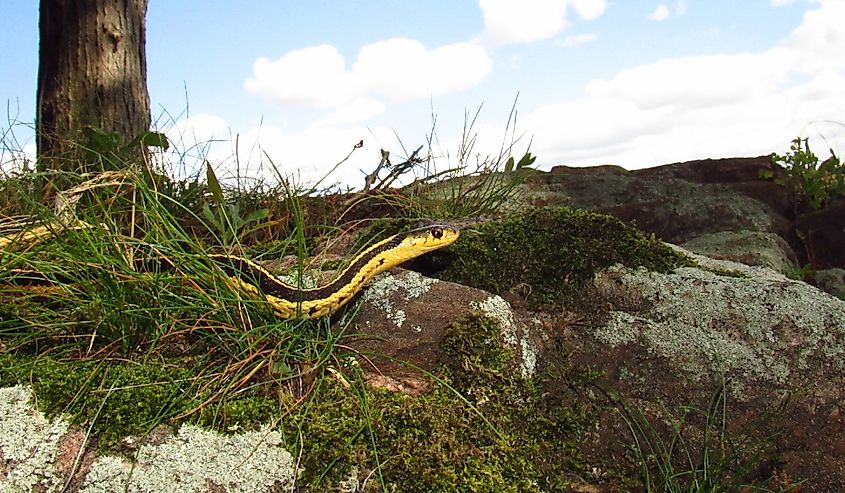
The eastern garter snake is a medium-sized snake, ranging between 18 to 26 inches in length found in the Great Lakes area in Canada. The snake is non-venomous, and while it does produce toxins, they are too weak to harm humans. In terms of appearance, the eastern garter snake has a green, brown, or black body with prominent yellow or white longitudinal stripes.
Looking at these lakes, snakes are quite common when it comes to lakes in Canada. From the Great Lakes along the Canada-United States border to smaller lakes in northwestern Canada, there are snake-infested water bodies all around. However, as most of these snakes live along coastal areas and don’t have harmful venom, you won’t have to worry about the most snake-infested lakes in Canada!

